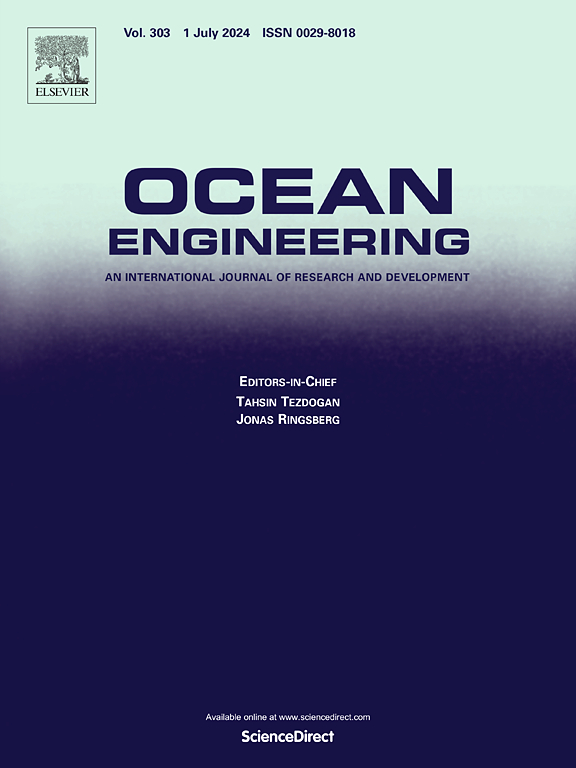Auto-tuning of controller parameters based on a probabilistic dynamic model with application in boat path following
IF 4.6
2区 工程技术
Q1 ENGINEERING, CIVIL
引用次数: 0
Abstract
Tuning the parameters of controllers for intelligent boats poses a formidable challenge for engineers, demanding substantial time and effort. Traditionally, engineers rely heavily on their theoretical knowledge and professional expertise, coupled with trial-and-error approach, to fine-tune these settings. To alleviate this burden, this paper introduces an auto-tuning algorithm for boat path following controllers based on a probabilistic dynamic model. This algorithm adopts a model-based reinforcement learning paradigm, facilitating the autonomous calibration of controller parameters even with limited datasets. We use probabilistic ensemble method to construct the boat's probabilistic dynamic model which incorporates uncertainties in a principled manner, perform state propagation using particle-based methods, and optimize controller with particle swarm optimization. To validate the efficacy of our approach, we applied the proposed method to optimize two lateral controllers--a proportion-differentiation controller and a neural network controller--within the Gazebo simulation environment. The experimental outcomes underscore the high data efficiency of our method, demonstrating its ability to optimize controller parameters with minimal data requirements, thereby eliminating the need for manual expertise and time-intensive tuning procedures.
调整智能船控制器的参数对工程师来说是一项艰巨的挑战,需要花费大量的时间和精力。传统上,工程师主要依靠自己的理论知识和专业知识,再加上试错法,来对这些设置进行微调。为了减轻这一负担,本文介绍了一种基于概率动态模型的船只路径跟踪控制器自动调整算法。该算法采用基于模型的强化学习范式,即使在数据集有限的情况下也能促进控制器参数的自主校准。我们使用概率集合法构建船只的概率动态模型,该模型以原则性的方式纳入了不确定性,使用基于粒子的方法执行状态传播,并使用粒子群优化法优化控制器。为了验证我们方法的有效性,我们在 Gazebo 仿真环境中应用所提出的方法优化了两个横向控制器--比例微分控制器和神经网络控制器。实验结果表明,我们的方法具有很高的数据效率,能够以最小的数据需求优化控制器参数,从而消除了对人工专业知识和时间密集型调整程序的需求。
本文章由计算机程序翻译,如有差异,请以英文原文为准。
求助全文
约1分钟内获得全文
求助全文
来源期刊

Ocean Engineering
工程技术-工程:大洋
CiteScore
7.30
自引率
34.00%
发文量
2379
审稿时长
8.1 months
期刊介绍:
Ocean Engineering provides a medium for the publication of original research and development work in the field of ocean engineering. Ocean Engineering seeks papers in the following topics.
 求助内容:
求助内容: 应助结果提醒方式:
应助结果提醒方式:


